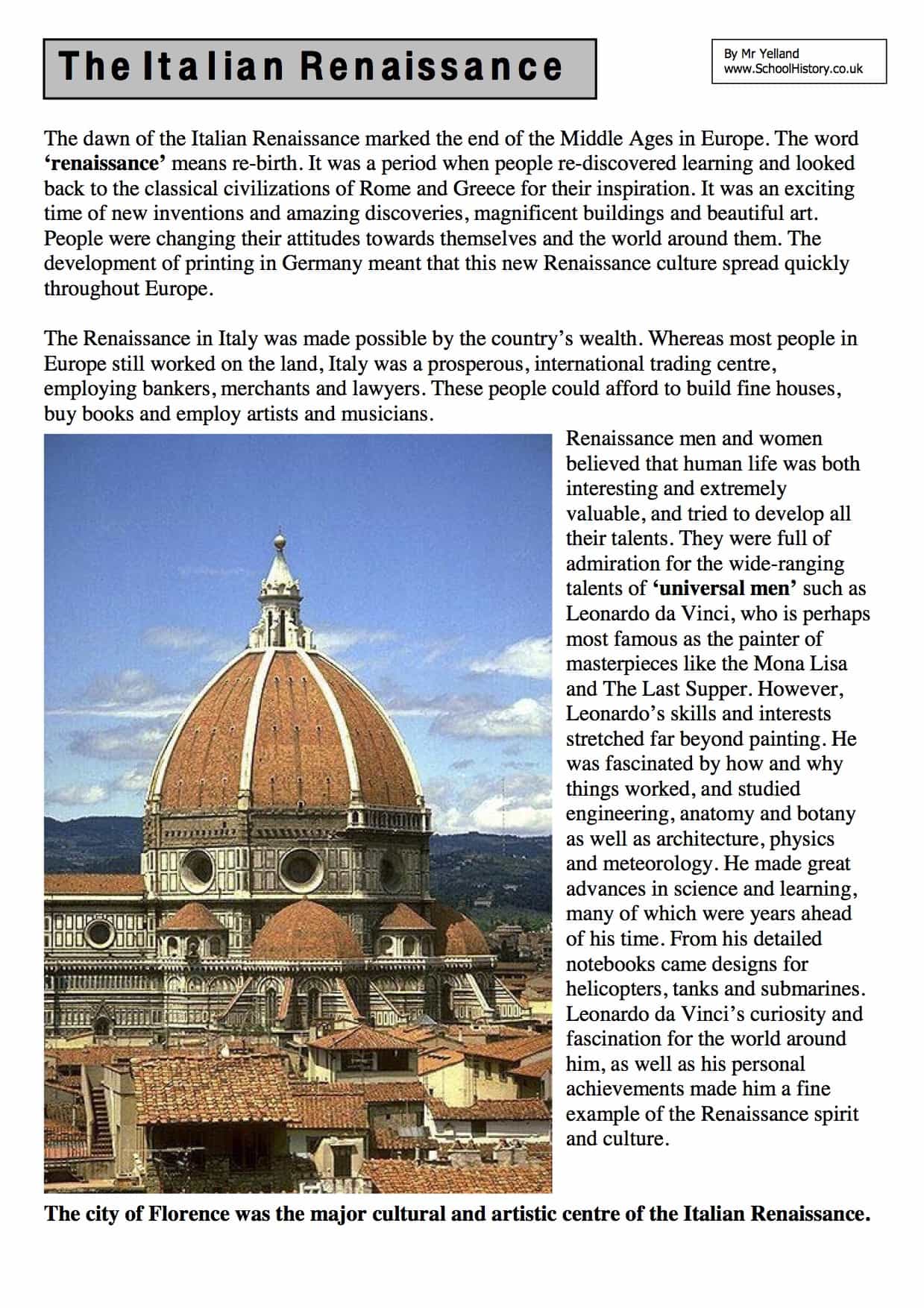Download The Italian Renaissance Facts & Information
Click the button below to download this worksheet for use in the classroom or at home.
Download →
Facts PDF Worksheet:
-
- Aimed at Students studying at UK Year 8 or equivalent
- Free to download
- Use as you wish in the classroom or home environment
- Structured study guide and challenging questions.
The dawn of the Italian Renaissance marked the end of the Middle Ages in Europe. The word ‘renaissance’ means re-birth. It was a period when people re-discovered learning and looked back to the classical civilizations of Rome and Greece for their inspiration. It was an exciting time of new inventions and amazing discoveries, magnificent buildings and beautiful art. People were changing their attitudes towards themselves and the world around them. The development of printing in Germany meant that this new Renaissance culture spread quickly throughout Europe.
The Renaissance in Italy was made possible by the country’s wealth. Whereas most people in Europe still worked on the land, Italy was a prosperous, international trading centre, employing bankers, merchants and lawyers. These people could afford to build fine houses, buy books and employ artists and musicians.
Renaissance men and women believed that human life was both interesting and extremely valuable, and tried to develop all their talents. They were full of admiration for the wide-ranging talents of ‘universal men’ such as Leonardo da Vinci, who is perhaps most famous as the painter of masterpieces like the Mona Lisa and The Last Supper. However, Leonardo’s skills and interests stretched far beyond painting. He was fascinated by how and why things worked, and studied engineering, anatomy and botany as well as architecture, physics and meteorology. He made great advances in science and learning, many of which were years ahead of his time. From his detailed notebooks came designs for helicopters, tanks and submarines. Leonardo da Vinci’s curiosity and fascination for the world around him, as well as his personal achievements made him a fine example of the Renaissance spirit and culture.
